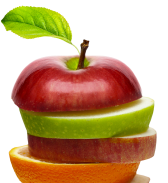Table Of Contents
Many weight-loss diets concentrate more on what you should eat and what not, while intermittent fasting is all about when you should eat. Here you only eat at a particular time with intermittent fasting.
Fasting for a set number of hours per day or eating only one meal (intermittent fasting skip lunch) a few times weekly can aid in fat loss. However, scientific evidence also suggests health advantages, such as blood pressure control and a healthy heart.
If you wish to learn how to start intermittent fasting, how a beginner should start fasting, and the periodic fasting guide and rules, then keep reading.
What is Intermittent Fasting
Intermittent fasting is a method of eating that substitutes fasting and eating periods. It does not tell you which meals you should eat but helps with when you should eat them. In this way, it’s better described as a pattern of eating than a diet in the traditional sense.
Day-to-day 16-hour fasts or observing fasting for 24 hours two times a week are the two most trending intermittent fasting methods. Humans have observed fasting from the beginning of time. Supermarkets, refrigerators, and year-round food were unavailable to the ancient hunters, so food wasn’t readily available.
They couldn’t always find something to eat. As a result, humans have evolved to function for long periods without eating.

How to Start Intermittent Fasting
How to start a fast? It’s necessary not to begin with the 16:8 approach, eliminating the need to jump into the deep end. The 16:8 hour fast entails fasting for 16 hours and eating for 8 hours. So instead, start with the 12:12 fast, which consists of a 12-hour eating window followed by a 12-hour fast.
However, in a 12:12 fast, for example, you’d eat dinner at 8 p.m. and then observe your fast until 8 a.m. the next day, after 12 hours. As a result, healthcare experts suggest that the effects of 12:12 fasting and 16:8 fasting are equivalent when you want to maintain weight.
It’s worth noting that fasting for extended periods improves insulin sensitivity and blood pressure in the long run. So, once you’ve mastered 12:12, gradually increase your fasting window. Could you not rush the process and take it slow?
How to Start Intermittent Fasting for Weight Loss Journey
Here are some tips to help you get started with intermittent fasting for weight loss:
- Choose a fasting schedule: You can follow several different fasting schedules (15 9 intermittent fasting). Choose a program that works best for your lifestyle and preferences.
- Gradually increase your fasting window: If you are new to intermittent fasting, it’s best to start with a shorter one and gradually increase it over time. For example, start with a 12-hour fasting window and progressively work up to 16 hours.
- Stay hydrated: It’s essential to stay hydrated during your fasting periods. Drink plenty of water, herbal tea, or other non-caloric beverages to help you stay hydrated and reduce hunger.
- Choose nutrient-dense foods: When you eat, choose foods that are high in nutrients and low in calories. This can help you feel full and satisfied while still promoting weight loss.
- Avoid overeating during your eating window: It’s easy to fill during your eating window, especially if you have been fasting for an extended period. Be mindful of your portions and try to eat slowly and mindfully to help you feel full and avoid overeating.
How Should a Beginner Start Intermittent Fasting?
Begin by eating within an 8-hour window, such as from 10 am to 6 pm. If you find that manageable, extend the fasting window until you reach the traditional 16 hours of fasting with 8 hours of eating.
Here are some steps you can follow:
1. Start gradually: If you’re new to intermittent fasting, starting gradually is essential. Begin by skipping breakfast or delaying your first meal of the day by a few hours. Once your body becomes accustomed to this new eating pattern, you can gradually increase the length of your fasting period.
2. Start slowly: If you are new to intermittent fasting, skip breakfast or delay your first meal. Then, gradually increase the length of your fasting period as your body adjusts.
3. Plan your meals: Plan your meals to ensure you eat nutrient-dense foods during your eating window.
4. Be patient: It may take time for your body to adjust to intermittent fasting. Be patient, and don’t give up too soon. With time and consistency, you may see the health benefits of intermittent fasting.
5. Listen to your body: If you feel unwell or experience adverse side effects, speak to a healthcare professional.
How to Start Intermittent Fasting 16/8 – 3 Expert Advice for Success
The 16/8 method involves fasting for 16 hours and eating during an 8-hour window each day. Here are three expert pieces of advice to help you successfully start intermittent fasting using the 16/8 method:
Step 1. Start gradually
It’s important to start gradually with intermittent fasting. If you’re new to this eating pattern, shorten your eating window by an hour or two each day until you reach the 8-hour window. This will give your body time to adjust to the new eating pattern and reduce the risk of harmful side effects.
Step 2. Plan your meals
Plan your meals to ensure a balanced diet during your eating window. Focus on nutrient-dense foods like fruits, vegetables, lean proteins, and whole grains to give your body the necessary nutrients. Avoid processed foods and foods high in sugar or unhealthy fats.
Step 3. Stay hydrated
Drink plenty of water during fasting to stay hydrated and reduce hunger. You can also have other calorie-free beverages like tea or black coffee.
Nutritional Tips for Intermittent Fasting 16/8: Eat and Fast Lose Weight
- Focus on nutrient-dense foods. Choose fruits, vegetables, and lean proteins. Avoid processed and high-calorie foods that offer little nutritional value.
- Eat enough protein. Protein is vital for building and maintaining muscle mass, which can help you burn more calories at rest. Aim to include a source of protein in each meal, such as chicken, fish, tofu, or legumes.
- Be mindful of portion sizes. While you don’t need to count calories with intermittent fasting, it’s still important to be mindful of portion sizes to ensure you’re not overeating during your eating window.
- Make sure to eat all meals. Even though you’re fasting for a portion of the day, consuming enough calories and nutrients to support your body’s needs is essential. Skipping meals can lead to overeating and impact your energy levels later in the day.
How Many Calories to Eat During Intermittent Fasting 16/8
You can use an online calculator or consult a registered dietitian to determine how many calories you need.
As a general guideline, a moderately active woman may need around 1,800-2,200 calories daily. So how many calories will kick you out of a fast? It’s a relatively you may need approximately 2,200-2,800 calories daily. So if you’re looking to lose weight, you should consume fewer calories.
How to Prepare for Intermittent Fasting
Preparing yourself for intermittent fasting involves taking calculated steps to make the right decisions and follow the proper steps.
Follow these steps to get adequately prepared for intermittent fasting to weight loss.
First, decide on the method of fasting you want to imply. There are many types, such as:
- Eat skip eat fasting method
- 20/4 fasting method
- Alternate fasting method
- 5:2 fasting method
- 12:12 fasting method
How Do You Start the First Day of Fasting?
Starting the first day of a fast can be an exciting and daunting experience. Therefore, ensuring you are adequately prepared for your chosen fasting regimen is vital to understanding your goals, the type of fast, and what it can achieve.
Take time each morning fasting to do some light stretching and practice a few minutes of breathing exercises. Furthermore, focus on hydration throughout the day, as drinking plenty of water or nourishing fluids like herbal teas or juices can energize us.
It’s also beneficial to plan some form of light exercise and have meals that are ample in nutrients that stimulate weight loss but still provide adequate calories for daily functioning.
Lastly, give yourself some grace if it takes some adjustment time: stay motivated by acknowledging your progress along this journey and showing appreciation for your body.
Intermittent Fasting Rules
Because intermittent fasting is such a broad and flexible term, many different approaches exist. This isn’t always a disadvantage, though. Because of these options, you may and should tailor your eating habits to your lifestyle. However, you can only achieve long-term success with intermittent fasting if you do it this way.
Nonetheless, each approach has its own set of pros and limitations, as well as its own set of laws. Discover which intermittent fasting plan is best for you. The rules are straightforward. Avoid junk food at all costs, avoid meals, and skip breakfast. So, choose and follow the easy direction to achieve success.
Intermittent Fasting Without Exercise: Is There Still Potential for Weight Loss?
Many seek popular health trends to reach their goals in an increasingly health-conscious society. Intermittent fasting is a dietary modification that has become quite popular recently, but what if you don’t pair it with exercise? Can intermittent fasting without training still lead to weight loss?
While intermittent fasting and walking may be more efficient, intermittent fasting alone can decrease body fat and help individuals with weight loss goals. More research must determine the optimal combination of dietary modifications and physical activity levels for successful weight loss. Nevertheless, there is definite potential for intermittent fasting as a part of a healthy lifestyle.
Why Am I Gaining Weight While Intermittent Fasting?
If you’re gaining weight while practicing intermittent fasting, there could be several reasons why:
Overeating during your eating window
You may gain weight if you eat more calories than your body needs during your eating window. Even if you’re fasting for the rest of the day, eating too many calories can still result in weight gain.
Consuming unhealthy foods
If you’re eating unhealthy, calorie-dense foods during your eating window, you may consume more calories than you realize. Instead, focus on nutrient-dense foods like fruits, vegetables, lean proteins, and whole grains to keep your calories in check.
Hormonal changes
Intermittent fasting for different body types can affect your hormone levels, which can impact your metabolism and cause weight gain. Hormonal changes can also impact your hunger and cravings, making sticking to a healthy eating pattern more challenging.
Medical conditions or medications
Certain medical conditions or medications can cause weight gain, even if you’re practicing intermittent fasting. Speak to a healthcare professional to rule out any underlying medical issues.
If you’re gaining weight while intermittent fasting, it’s essential to reassess your eating habits and make sure you’re consuming a healthy, balanced diet during your eating window.
Intermittent Fasting Morning or Night: When to Eat for Rapid Results
The timing of your eating window during intermittent fasting can depend on your personal preferences and schedule.
However, the research suggests that having your eating window earlier in the day may be more beneficial for weight loss and overall health.
One study found that individuals who ate most of their calories earlier in the day had greater weight loss and improved insulin sensitivity than those who ate most of their calories later in the day. This may be because our bodies are naturally more insulin sensitive earlier in the day, meaning we can process carbohydrates more efficiently and have better blood sugar control.
Another study found that eating a larger breakfast and intermittent fasting and skipping dinner resulted in greater weight loss and improved metabolic health markers compared to the opposite pattern of a smaller and larger dinner.
The Real Truth About Skip Breakfast Intermittent Fasting
While skipping breakfast can effectively reduce overall calorie intake and promote weight loss, it’s essential to consider this approach’s potential benefits and drawbacks.
Skipping breakfast during intermittent fasting may reduce insulin resistance and improve blood sugar control. When you eat a meal, your body releases insulin to process glucose in your bloodstream. By skipping breakfast, you give your body a longer break from insulin secretion, which may improve insulin sensitivity.
For some people, eating breakfast can trigger hunger and cravings throughout the day, leading to overeating. You may find it easier to stay within your daily calorie limits by skipping breakfast.
However, there are also potential drawbacks to skipping breakfast. For example, some research suggests that skipping breakfast may lead to decreased cognitive performance and impaired memory.
Should You Take a Break From Intermittent Fasting: Indications and Contraindications
Taking a break from intermittent fasting may be necessary for certain situations, but it’s essential to understand when it may be appropriate and when it may not be recommended.
Indications for taking a break from intermittent fasting may include the following:
- Illness or injury
- Stressful periods
- Travel
- Plateaued weight loss
On the other hand, there may be some contraindications for taking a break from intermittent fastings, such as:
- Using it as an excuse to binge
- Not having a plan to return
- Not consulting with a healthcare professional
How to Break Intermittent Fast: Recommended Protocol for Avoiding Refeeding Syndrome
Breaking an intermittent fast properly is vital to avoid refeeding syndrome, which can occur when the body undergoes rapid shifts in fluid and electrolyte levels after a prolonged fasting period.
Here are some recommended protocols for breaking an intermittent fast:
- Start with small meals: Begin with small meals or snacks that are easy to digest, such as fruit or a protein shake. This allows your body to adjust gradually to digesting food again.
- Avoid high-carbohydrate or high-fat foods: It’s best to avoid foods high in carbohydrates or fats, as they can be harder to digest and may cause digestive upset.
- Consume electrolytes: Electrolytes such as sodium, potassium, and magnesium are essential for maintaining fluid balance in the body. Consuming electrolyte-rich foods or drinks, such as bone broth or coconut water, can help replenish these nutrients.
- Wait an hour between meals: Allow at least an hour to give your body time to digest and adjust to food reintroduction.
- Gradually increase portion sizes: After the first few small meals, gradually increase the size of your meals as your body adjusts to digesting food again.
It’s important to note that if you’re interested in how long to start seeing results from intermittent fasting (more than 48 hours), you should consult a healthcare professional before breaking your fast. They can provide individualized guidance on when to see results, how to break your fast safely and prevent refeeding syndrome.
Final Thought
Intermittent fasting is a robust health and weight loss tool and can be very beneficial to incorporate into your lifestyle. As you can see, “how to start with intermittent fasting” doesn’t have to be complicated, and the key lies in educating yourself on the available options and finding one that suits you.
There are many different ways to approach intermittent fasting—from time-restricted feeding to whole-day fasts—allowing you to tailor your unique routine while still achieving results.
Whether you want to lose weight or improve your overall health, taking advantage of intermittent fasting will surely provide lasting results. So start now on your journey for a healthier tomorrow!
After all, inspiration and support can help you get through the procedure more quickly. However, we are at your beck and call to make the leisurely journey. Click to take our quiz to get started.











Your comprehensive guide to intermittent fasting is incredibly insightful! It’s amazing how the concept of when to eat rather than what to eat can make a difference and Lasta fasting app can help.
Hi,Jessica!
Thank you so much for your kind words! It’s fantastic to know that Lasta fasting app can assist in this journey. Happy fasting! 🌟